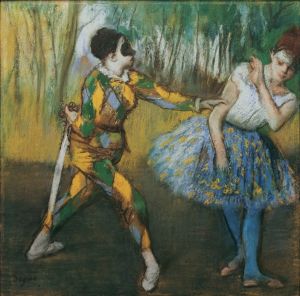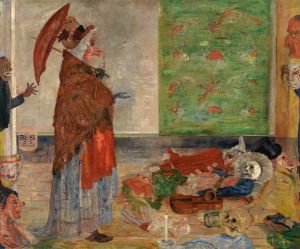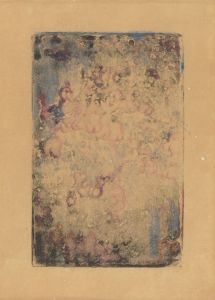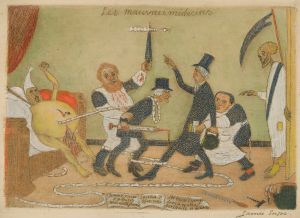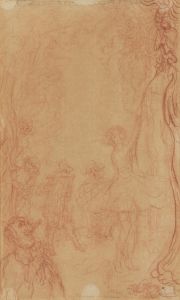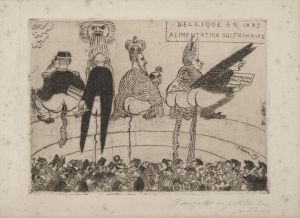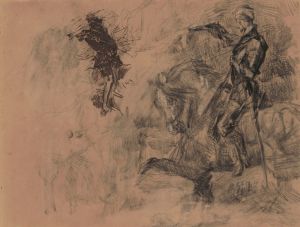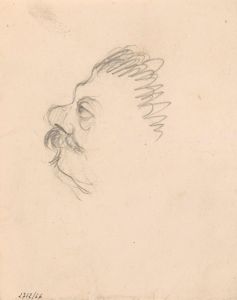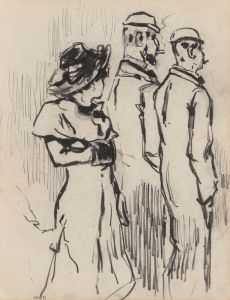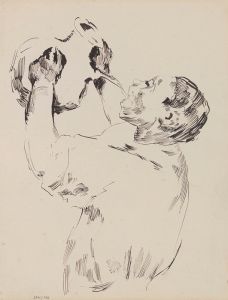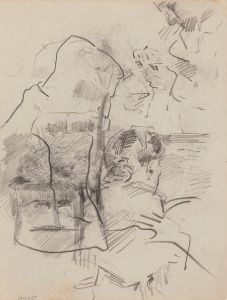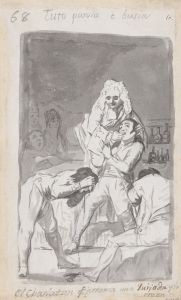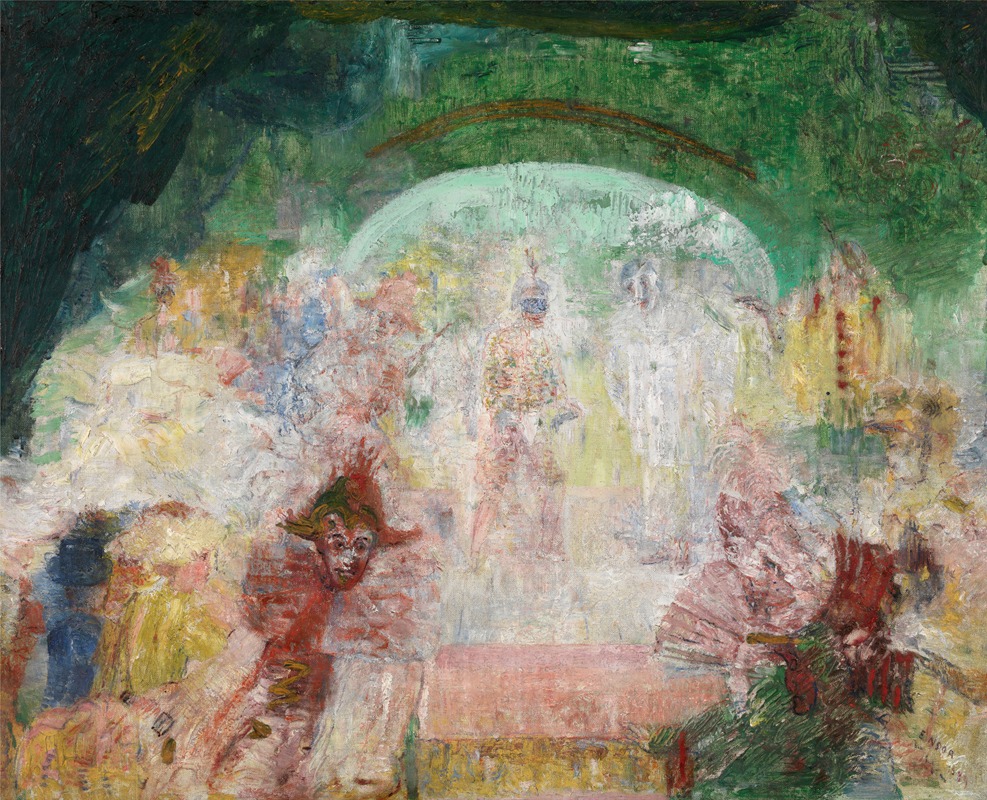
Masquerade
A hand-painted replica of James Ensor’s masterpiece Masquerade, meticulously crafted by professional artists to capture the true essence of the original. Each piece is created with museum-quality canvas and rare mineral pigments, carefully painted by experienced artists with delicate brushstrokes and rich, layered colors to perfectly recreate the texture of the original artwork. Unlike machine-printed reproductions, this hand-painted version brings the painting to life, infused with the artist’s emotions and skill in every stroke. Whether for personal collection or home decoration, it instantly elevates the artistic atmosphere of any space.
James Ensor's "Masquerade" is a notable work by the Belgian artist, who is renowned for his unique and often surreal style. Ensor, born in 1860 in Ostend, Belgium, was a pivotal figure in the development of Expressionism and Symbolism in European art. His works are characterized by their vivid color palette, intricate detail, and often grotesque or fantastical imagery.
"Masquerade" is emblematic of Ensor's fascination with masks and the theme of disguise, which recurs throughout his oeuvre. Masks in Ensor's work often symbolize the hidden aspects of human nature and society's tendency to conceal its true face. This theme is reflective of the broader cultural and artistic movements of the late 19th and early 20th centuries, which frequently explored the dualities of appearance versus reality.
The painting itself is a vibrant and chaotic scene, filled with figures adorned in elaborate costumes and masks. Ensor's use of masks serves as a critique of social conventions and the superficiality he perceived in the society of his time. The figures in "Masquerade" are depicted with exaggerated expressions and gestures, adding to the sense of theatricality and absurdity. This aligns with Ensor's broader artistic vision, which often sought to challenge and provoke the viewer's perceptions.
Ensor's technique in "Masquerade" is notable for its bold use of color and dynamic composition. He employs a bright and often jarring color scheme, which enhances the sense of unease and surrealism in the work. The composition is densely packed, with little negative space, creating a sense of claustrophobia and intensity. This approach is typical of Ensor's style, which often combines elements of traditional Flemish painting with more avant-garde techniques.
The painting reflects Ensor's interest in the carnivalesque, a theme that is prevalent in much of his work. The carnival, with its inversion of social norms and embrace of chaos, serves as a metaphor for the underlying disorder and hypocrisy Ensor saw in the world around him. "Masquerade" can be seen as a visual representation of these ideas, capturing the tension between order and chaos, reality and illusion.
James Ensor's work, including "Masquerade," had a significant impact on the development of modern art. His exploration of themes such as identity, society, and the grotesque influenced later movements, including Surrealism and Expressionism. Ensor's ability to blend humor with a critical edge has ensured his place as a key figure in the history of art.
"Masquerade" remains an important example of Ensor's artistic vision and continues to be studied for its innovative approach to both technique and subject matter. The painting is housed in various collections, where it continues to captivate audiences with its vivid portrayal of the human condition and its critique of societal norms.





